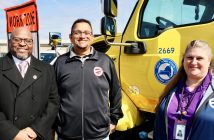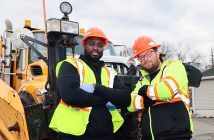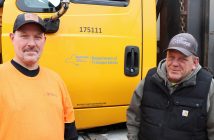When Peer Trainers John LeFebvre and John Charland asked attendees about their work experiences during the trainers’ tree trimming and logging workshop at the recent Statewide Conference on Occupational Safety and Health, they couldn’t believe some of the responses.
One group of attendees spoke about their employer, who handed workers a printout detailing tree trimming instructions and sent them to do the work with only safety glasses and earplugs.
Other workers said they lacked training on chainsaw safety and lacked a first aid kit that specifically meets federal Occupational Safety and Health Administration standards for treating tree-related injuries.
“We were shocked to find several people who attended the conference who had been grossly mis-trained on the job,” LeFebvre said. “It was disheartening to find out that this was still going on.”
LeFebvre and Charland are working to ensure that workers are properly trained. The two Capital Region activists frequently do tree and logging work through their jobs at the state Department of Environmental Conservation.
Tree trimming and logging safety is a major concern for our union, as two of our brothers, Orange County Parks Department Laborer Tonny Teskera and Town of Otsego Highway Department worker Adam Burgess, died from injuries sustained on the job in 2015 while doing tree work. In both cases, inadequate training, lack of equipment and poor safety practices contributed to their preventable deaths.
“(Tree trimming and logging) is one of the most dangerous professions,” LeFebvre said. “It can be unforgiving and something can go wrong very quickly.”
LeFebvre said workshop attendees, including the ones who were handed a printout and the group who lacked the appropriate first aid kits, had requested copies of the workshop presentation, which outlines OSHA’s recommendations, to show to their employers and make them accountable.
LeFebvre is also planning to survey members in his own region who work in tree trimming and logging to assess their working conditions. On a larger scale, he would like to see more awareness about potential hazards of tree work and minimize them so no one else loses their lives on the job.
“(Tree work injuries and deaths) are preventable,” he said. “With proper training, (Teskera and Burgess) wouldn’t have lost their lives.”
— Janice Gavin




